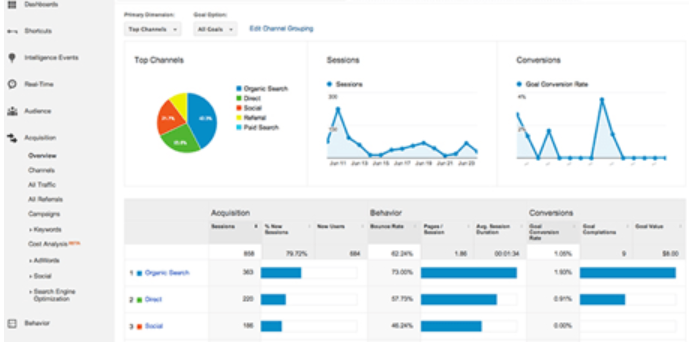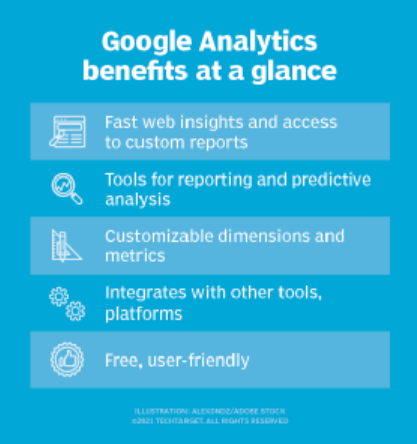Google Analytics metrics help you understand our digital presence. Why is this important? Because it directly affects your success.
Moreover, Google Analytics offers a wealth of data. This data helps businesses optimize their strategies and improve user experiences.
Among all the data points available, some metrics stand out. These metrics have a direct impact on your marketing success.
In this article, we will explore 10 crucial Google Analytics metrics. Tracking these will fine-tune your online presence.
Understanding these metrics can seem exhausting. But it’s necessary for growth.
We will make it easy for you. Let’s walk the world of Google Analytics metrics together.
- What Google Analytics Metrics Are
- Why Track Google Analytics Metrics?
- The Top 10 Google Analytics Metrics to Monitor
- How to Analyze and Interpret Google Analytics Metrics
- Implementing Changes Based on Analytics Insights
- Common Mistakes to Avoid When Analyzing Google Analytics Metrics
- Harnessing the Potential of Google Analytics Metrics
- FAQs
What Google Analytics Metrics Are

Google Analytics metrics are like the vital signs for your website. Just as doctors use vital signs to assess health, these metrics check the health of your digital presence.
But what are these metrics, exactly? They’re numbers that tell you how visitors interact with your website. From the pages they find most interesting to how long they stay and even how they found your site in the first place.
Imagine having a bird’s-eye view of your website’s traffic. You can see not just how many people visit, but also their journey through your site.
This information is gold for any business. It shows what’s working and what’s not.
It’s like having a roadmap for success.
By understanding these metrics, you can make informed decisions. This could mean tweaking your site to keep visitors engaged longer or adjusting your content to draw more traffic.
Ultimately, Google Analytics metrics offer insights into your website’s performance. They help you understand your audience better and refine your strategies to meet their needs.
With this knowledge, you’re equipped to enhance your online presence and drive your business forward.
Why Track Google Analytics Metrics?

Tracking Google Analytics metrics is pivotal for several reasons.
First, it understands your audience better—knowing who visits your site, where they come from, and how they interact with your content. This information is invaluable for tailoring your marketing efforts to match your audience’s preferences.
Moreover, these metrics can highlight areas of your website that need improvement. For instance, a high bounce rate might indicate that your landing pages are not engaging enough or that your site’s navigation is confusing.
By identifying and addressing these issues, you can enhance user experience and increase conversion rates.
Lastly, Google Analytics metrics help you measure the success of your marketing campaigns. This enables you to allocate your budget more effectively and boost your ROI.
The Top 10 Google Analytics Metrics to Monitor
Users and Sessions
Understanding the difference between users (unique visitors) and sessions (individual visits) provides a foundation for analyzing your website’s traffic. Tracking the number of users gives you an idea of your website’s reach, while sessions help you understand engagement levels.
An increase in users indicates growing awareness, whereas more sessions per user suggest higher engagement.
Bounce Rate
The bounce rate represents the percentage of visitors who leave your site after viewing only one page. A high bounce rate could signal that your site’s landing pages are not compelling or relevant to your audience.
Improving content quality and making your call-to-action (CTA) more prominent can help reduce the bounce rate.
Session Duration
The average session duration tells you how long visitors stay on your site. Longer durations often indicate your content is engaging and valuable to your audience.
Enhancing content quality and interlinking relevant pages can encourage visitors to spend more time on your site.
Traffic Sources
Identifying where your website’s traffic comes from (e.g., organic search, social media, direct visits) can help you fine-tune your marketing strategies. For example, if a significant portion of your traffic comes from organic search, it’s crucial to invest in SEO.
Conversely, if social media drives a lot of traffic, focusing on your social media strategy might be beneficial.
Pageviews and Unique Pageviews
Pageviews count the total number of pages viewed on your site. Unique pageviews aggregate multiple views of the same page by the same user during a single session.
These metrics offer insights into the popularity of your content and how effectively it encourages exploration of your site.
Conversion Rate
The conversion rate measures the percentage of visitors who take a desired action, such as purchasing or signing up for a newsletter.
Optimizing landing pages, improving site speed, and making CTAs more prominent can boost your conversion rate.
Goal Completion
Setting up specific goals in Google Analytics track when visitors complete desired actions.
Analyzing goal completion rates helps you understand how well your site meets its objectives and where there’s room for improvement.
E-commerce Conversion Rate
For e-commerce sites, tracking the conversion rate of shoppers to buyers is essential.
Improving product descriptions, streamlining the checkout process, and offering competitive pricing can enhance your e-commerce conversion rate.
Site Speed
Site speed impacts user experience and SEO rankings. Slow loading times can lead to higher bounce rates and lower engagement.
Tools like Google’s PageSpeed Insights can help you identify and fix speed issues.
Mobile Traffic
With the increase of mobile devices, monitoring mobile traffic is more important than ever. Ensuring your site is mobile-friendly can improve user experience for a significant portion of your audience.
How to Analyze and Interpret Google Analytics Metrics
Analyzing Google Analytics metrics requires a systematic approach.
Start by setting clear objectives for what you want to achieve with your website.
Next, identify the metrics that directly impact those objectives. Use dashboards and custom reports to monitor these metrics regularly, and dive deep into the data to uncover trends and insights.
Remember, the goal is not just to collect data but to derive actionable insights that can drive your digital marketing strategy forward.
Implementing Changes Based on Analytics Insights
Data from Google Analytics should not just be reviewed; it should inform your digital strategy. Here are examples of how to turn insights into action:
If your bounce rate is high, consider revisiting your landing page’s content and design. Ensure your pages are visually appealing, content is directly relevant to your audience’s interests, and CTAs are clear.
For low conversion rates, examine your conversion funnel. Identify where potential customers drop off and streamline the process. Sometimes, simplifying a form or enhancing site navigation can significantly impact conversions.
When you notice a decline in mobile traffic, it’s a cue to check your site’s mobile responsiveness. Google’s Mobile-Friendly Test can help identify areas for improvement to ensure a seamless experience for mobile users.
Remember, the key is continuous monitoring and testing. Small, incremental changes can lead to substantial improvements over time.
Common Mistakes to Avoid When Analyzing Google Analytics Metrics
When diving into Google Analytics, it’s easy to get overwhelmed or sidetracked. Here are common pitfalls to avoid:
Ignoring context
Metrics can fluctuate due to seasonality, market trends, or external factors. Always consider the broader context when analyzing data.
Focusing on vanity metrics
It’s tempting to concentrate on metrics that make you look good, like pageviews, but they may not directly contribute to your business goals. Focus on metrics that matter.
Overlooking conversion paths
Understanding the journey from visitor to customer is crucial. Don’t just focus on the final conversion; analyze the steps leading up to it.
By avoiding these mistakes, you can ensure a more accurate and beneficial use of Google Analytics data.
Harnessing the Potential of Google Analytics Metrics
Monitoring and analyzing Google Analytics metrics is crucial for any business aiming to succeed online.
By focusing on the 10 key metrics outlined above, you can gain valuable insights into your audience’s behavior, website performance, and the effectiveness of your marketing strategies.
Remember, the goal of tracking these metrics is to make data-driven decisions that enhance user experience, improve site performance, and ultimately, drive conversions and revenue.
Also, continuous learning and adaptation are critical. As your business evolves, so should your analytics strategy.
Don’t hesitate to experiment with new approaches, measure the outcomes, and refine your tactics based on the data.
For those seeking personalized assistance with Google Analytics metrics, contact Flying V Group. Our expertise can help you navigate the complexities of Google Analytics and leverage your data for maximum impact.
FAQs
What is the best way to get started with Google Analytics?
Start by defining clear objectives for your website. Install Google Analytics, set up goals that reflect your objectives, and familiarize yourself with the basic reports. Consider taking advantage of Google’s free Analytics Academy courses.
How often should I check Google Analytics metrics?
This depends on the size of your business and the volume of your website traffic. However, a weekly check is beneficial for most businesses, with a deeper monthly analysis for trend spotting and strategic planning.
Can Google Analytics metrics help improve SEO?
Absolutely. Metrics like bounce rate, pageviews, and session duration can provide insights into user engagement, a factor that search engines consider when ranking websites. Additionally, tracking organic search traffic can help you understand the effectiveness of your SEO efforts.
Why is my bounce rate high, and how can I reduce it?
A high bounce rate could be due to irrelevant content, poor website design, or slow loading times. To reduce it, ensure your landing pages are engaging, relevant to your audience’s interests, and quick to load.
How can I track conversions more effectively in Google Analytics?
Make sure to set up goals in Google Analytics that match your business objectives. For e-commerce sites, use the e-commerce tracking feature to get detailed reports on purchasing behavior.






0 Comments